Its memory was again conjured up a few months ago as people struggled to compare Hurricane Sandy with some devastating event in New York’s past. And indeed, the Blizzard and Sandy have several disturbing similarities. But the battering snow-hurricane of 1888, with freezing temperatures and drifts three stories high, was made worse by the condition of New York’s transportation and communication systems, all completely unprepared for 36 hours of continual snow.
The storm struck in the early hours of Monday, and many thousands attempted to make their way to work, not knowing how severe the storm would be. It would be the worst commute in New York City history! Fallen telephone and telegraph poles became a hidden threat under the quickly accumulating drifts.
Elevated trains were frozen in place, their passengers unable to get out for hours. Many died simply trying to make their way back home on foot, including Roscoe Conkling (at right), a power broker of New York’s Republican Party.
But there were moments of amusement too. Saloons thrived, and actors trudged through to the snow in time for their performances, And for P.T. Barnum, the show must always go on!
STARRING: Hugh Grant (although maybe not the one you’re thinking)
NOTE: And, yes, we can’t believe the timing of this one, releasing on the same date of an ACTUAL blizzard. We really had this one planned for awhile, delayed it a bit because it seemed too eerie to do it so close after Hurricane Sandy.
So if you’re in New York or the northeast United States, stay inside, stay safe and let this podcast be the only dangerous snow drifts you experience this week!
In the blizzard of 1888, the streets disappeared and the snow came down almost horizontally. Imagine being trapped at work, several miles from your home. This was the plight experienced by thousands of New Yorkers (and others throughout the northeast) that Monday. (Library of Congress)

Why did the 1888 blizzard become such a hazard for New Yorkers? Let this picture be your first clue. The city was a cobweb of elevated telegraph, telephone and electric wires. This picture is from 1887. (LOC)
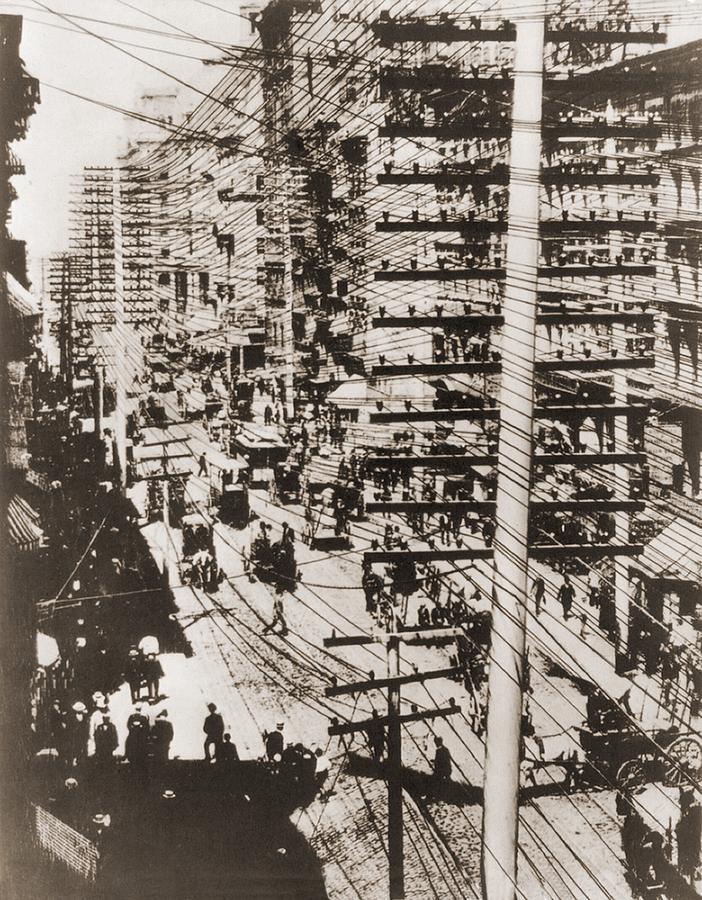
One example of a terrible (although minor) snow drift that might have kept this family in their home all day. Because of the unpredictable changes in wind, some houses might have been drift-free, while others close by completely locked in with snow. (LOC)
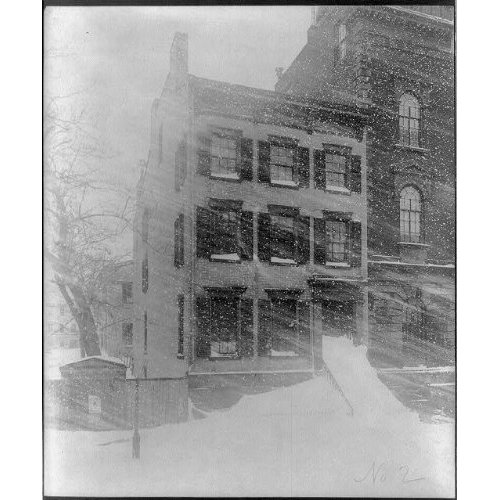
George Washington at the Sub-Treasury Building (today Federal Hall). I ran this photo a few weeks ago, but it’s so bizarre that I think it needs a second posting.
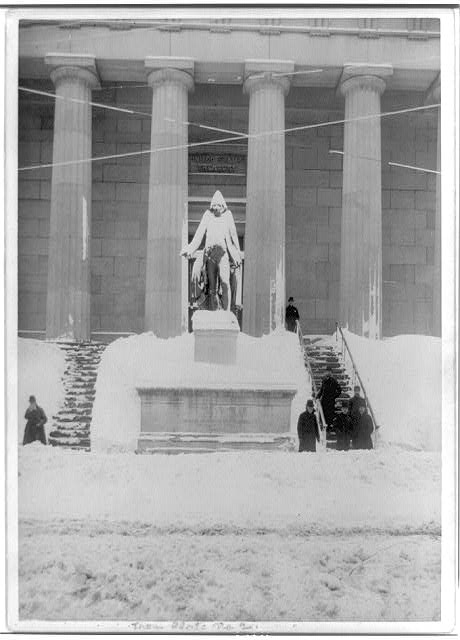
The Brooklyn Bridge, not even five years old, weathered the winds quite well, but became a hazard due to ice. In this picture, people are crossing over as there was no other way to get between Manhattan and Brooklyn. It’s not clear if any of the trains are operating in this picture.
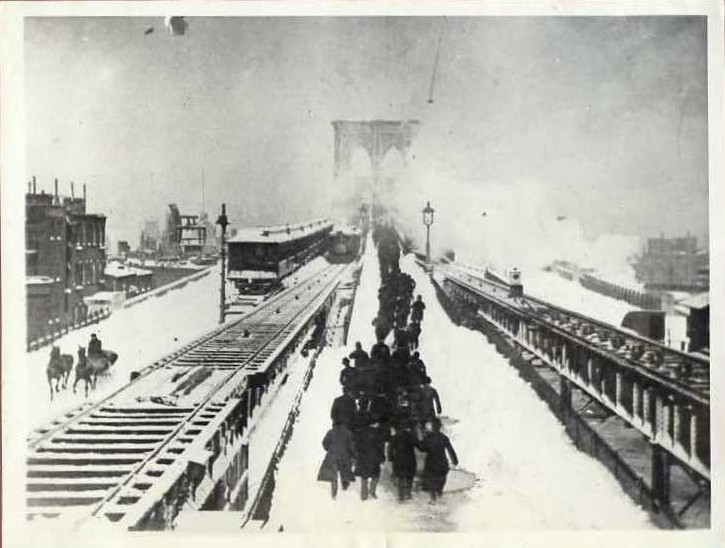
The biggest danger for those venturing outside were the hundreds of downed telegraph, telephone and electrical poles, no match for the intense gusts. The poles would quickly fall then get covered with snow, creating deadly hazards for people walking past. The snow would just as quickly cover over an unconscious individual; many New Yorkers froze to death when they fell and were instantly shrouded.
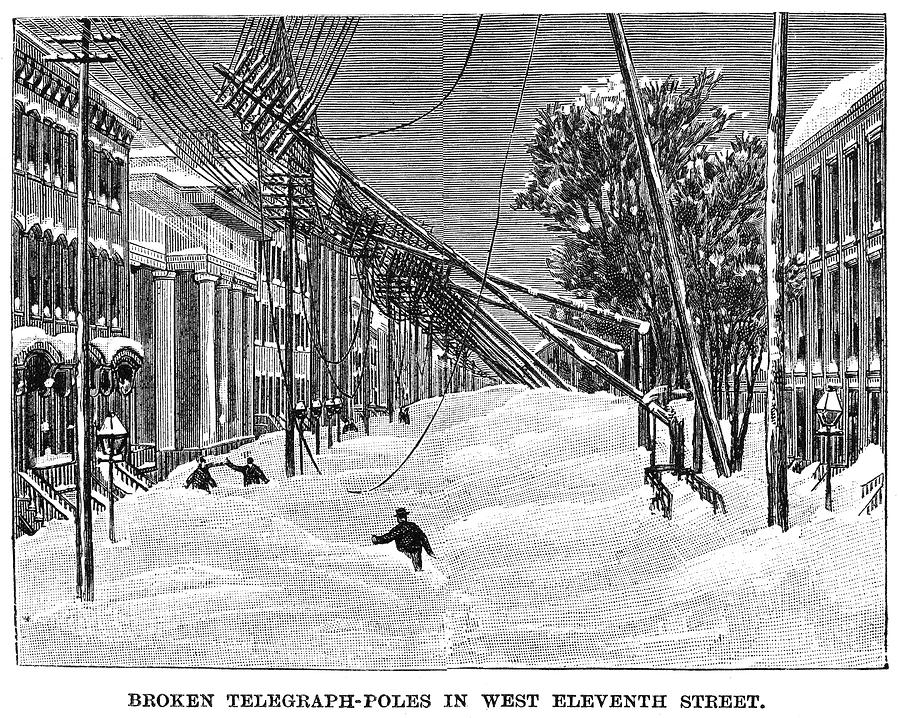
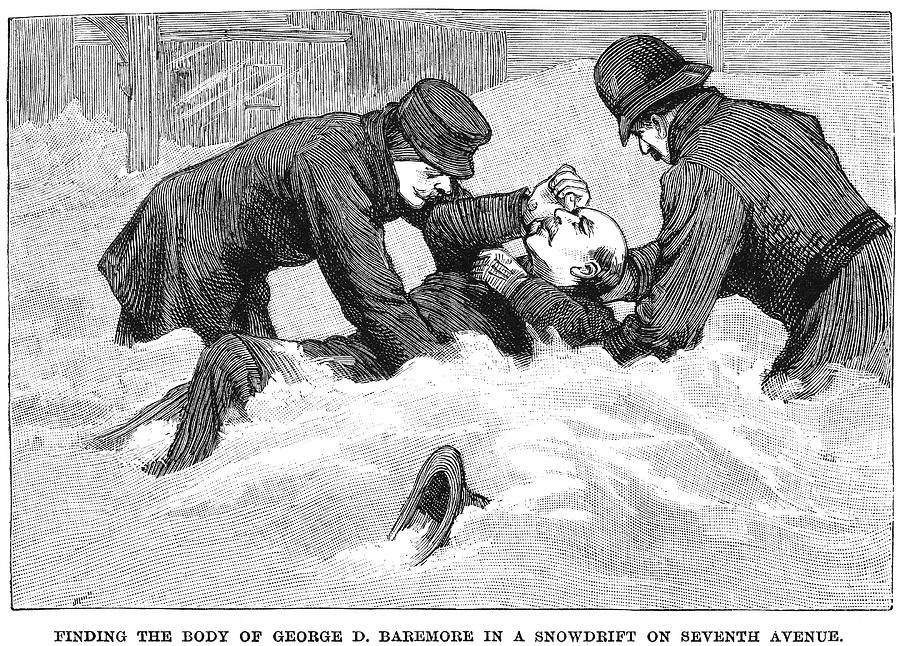
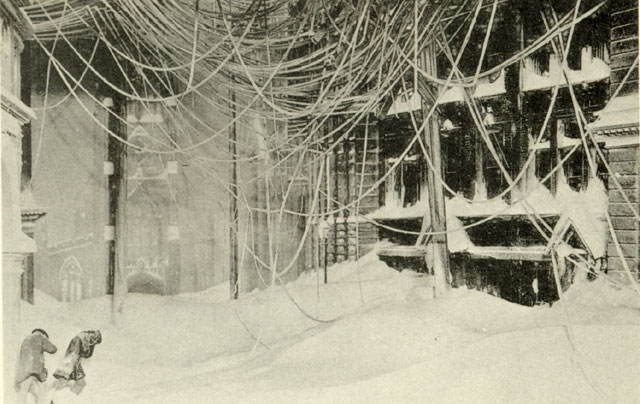
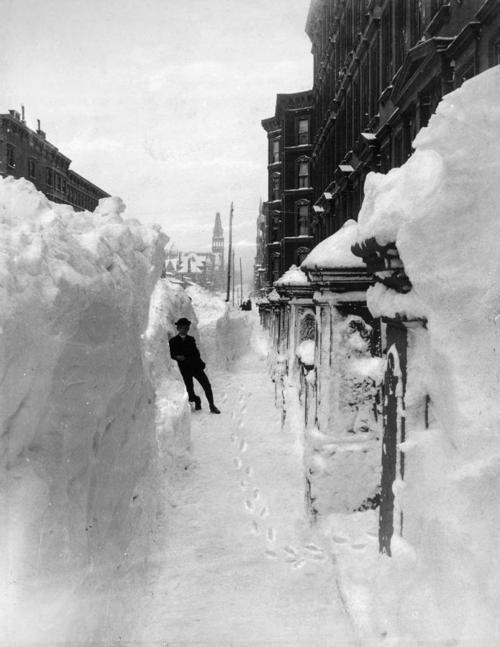
Henry Bergh, founder of the American Society for the Prevention of Cruelty to Animals. He did not survive the blizzard. (NYHS)
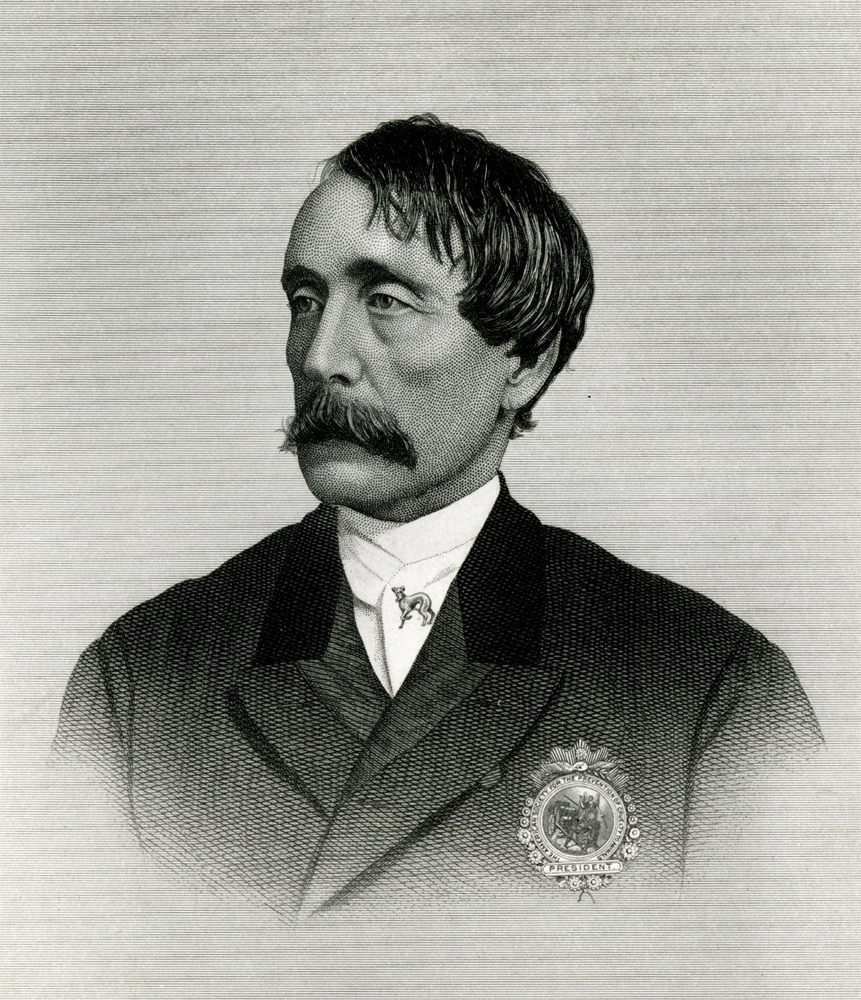
Transportation in and out of the city was at a complete standstill for half the week. Here workers frantically try to clear the way for trains going into Grand Central Depot.
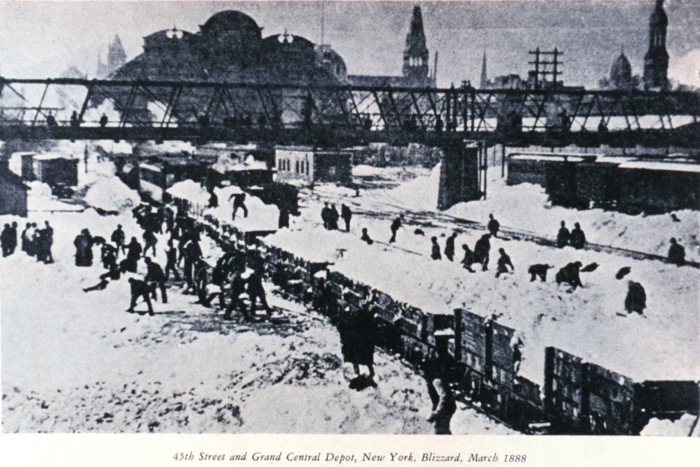
Clean-up was truly chaotic, a feeble effort by the city paired with private contractors with horses, shovels and carts. The piles of snow were taken to water’s edge and dumped, or, in a few less preferred cases, people just started bonfires and melted it away. (For a great picture of a snow dump in the river, see this photo at Shorpy of a blizzard from 1899.) Top pic courtesy LOC, at bottom Maggie Blanck.
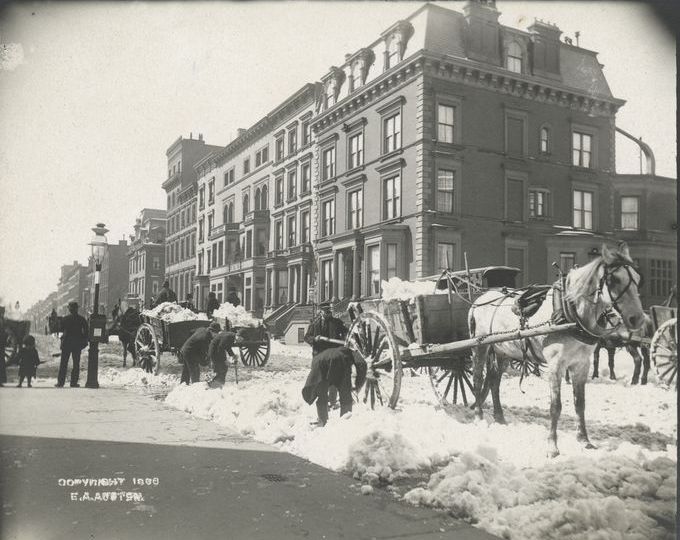
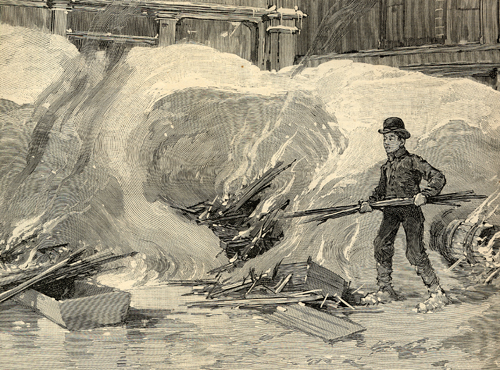
The cover of Frank Leslie’s Illustrated Newspaper, usually one of the more sensational pieces of journalism people might have found at their newsstand.

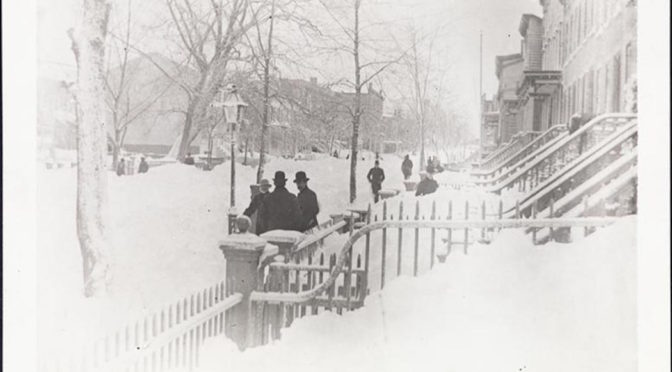
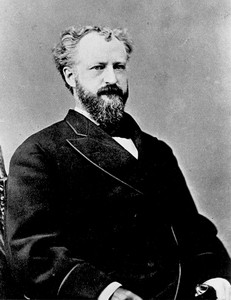
14 replies on “Frozen in time: The Blizzard of 1888 knocks New York City off its feet, creating the deadliest commute in history”
Love the photo of George Washington – he looks like he’s shivering doesn’t he?
Of course, I’m not surprised what with his big snow shako on his head. 🙂
‘Cobweb’ is an understatement! Great podcast – thanks for the frightening illustrations.
I love the photos of the 1888 blizzard. Growing up I always heard about 1947, the one in the mid 60’s, and Feb. 1978 when I was still in high school. Having lived thru 2 main blizzards, we had the convenience of snow blowers along with shovels. NOT IN 1888!!!!
I HAVE BEEN THROUGH MANY SNOWSTORMS DURING MY LIFE BUT THE BLIZZARD OF 1888 IS THE MOST MEMORABLE!
My grandfather, James Percival Kenna, was exactly 8 years old as of March 10, 1888. He lived through it in Perth Amboy, N.J. Times were so different then. Perth Amboy was so close to Manhattan, yet my grandpa’s family knew nothing of the severity of the storm until the newspapers came out. Grandpa said they all bundled up, and sat around around the big coal stove, and sang songs whilst listening to the howling wind.
Dear Jersey Boy,
While searching my family backround, I see we share a grandfather. James Percival Kenna was born in 1880…not sure where…his mom was Eleanor Stanislaus Walsh Kenna…I do know my own mother, daughter of James P. lived with her grandmother, who ran a bording house in Perth Amboy after she was widowed. I hope you get this message and e-mail me…
THIS IS THE GREATEST BLIZZARD IN HISTORY. I AM PROUD TO SAY THAT I SURVIVED THE FEBRUARY 9,1969 BLIZZARD WHEN I WAS STRANDED FOR 63 HOURS !
ARE YOU THE PERSON WHO HAS NEVER MISSED A DAY OF SCHOOL IN 40 YEARS?
I wonder if DeBlasio or Bloomberg would have kept schools open during the Blizzard of ’88
This is great history that l never read before and it come with amazing photos. GREAT.
[…] post from the Bowery Boys site (which is worth a read or a click for the pictures alone) stirred my memory – hadn’t I […]
Bravo Bravo
Hello, I’m working on a project about the Great Blizzard, and I was wondering what your sources were for the illustrated prints of the downed telegraph lines and the recovering of George D. Baremore’s body as well as the photograph right below of the downed telegraph lines? I assume they are public domain because they were undoubtedly printed before 1923, but where can I find the metadata?